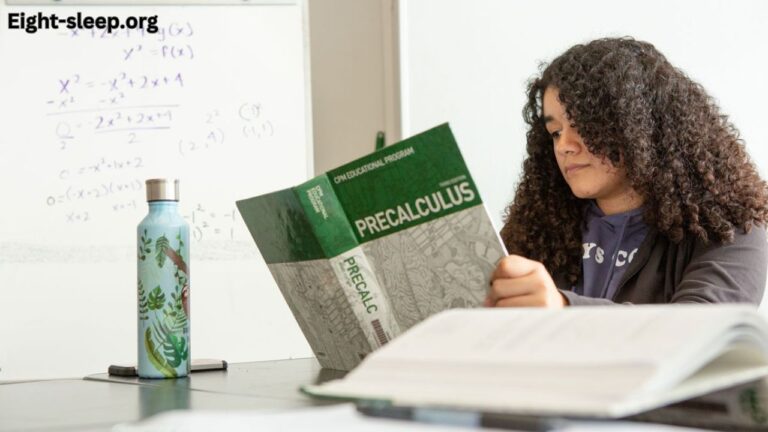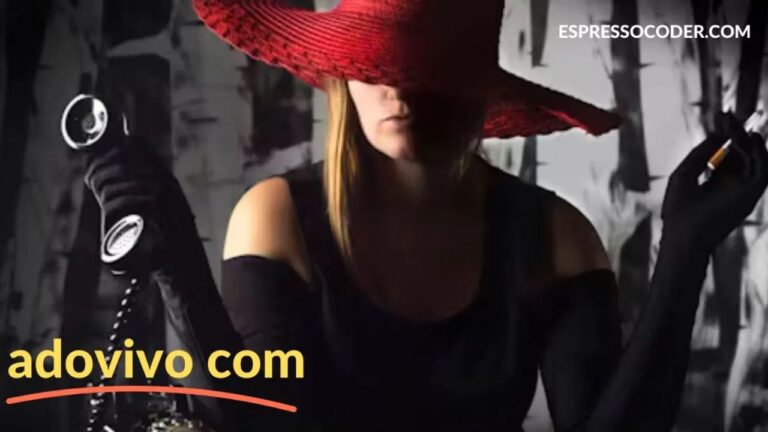Crack the Class Code: MCQ of elementary school classroom in a slum
MCQ of elementary school classroom in a slum, and the first thing you notice isn’t the textbooks—it’s the tenacity. Often built beside open drains or squeezed between crumbling buildings, these schools are miracles of community resolve. But what truly defines them?
They serve children from families battling daily for bread, where education isn’t a birthright but a borrowed dream. Many students are first-generation learners. Most share benches, textbooks, and in many cases, even shoes.
Despite such constraints, the human capital—teachers and students—are nothing short of heroic. Teachers walk miles through unsafe areas, adapt lessons without tech, and teach in multilingual classrooms without formal training in bilingual education.
And students? They show up. Every single day.
Table of Contents
ToggleWhy 35 MCQs Matter More Than You Think
At first glance, they’re just multiple-choice questions. But when placed in the hands of children from resource-starved areas, they transform into diagnostic tools.
These mcq of elementary school classroom in a slum are designed to expose systemic educational failures. They test core competencies—literacy and numeracy—but also the gap between policy and practice.
For example, a question might ask: “If Rani has 6 apples and gives away 4, how many does she have left?”
Simple, right? But what if Rani has never had even one apple?
Suddenly, the question becomes a puzzle with cultural barriers. It’s not just about subtraction anymore. It’s about representation, experience, and access.
Inside the Paper: The Story Behind the 35 Questions
Crafted in collaboration with grassroots educators, these mcq of elementary school classroom in a slum to align with national curricula while accounting for linguistic, cultural, and cognitive diversity.
Teachers played a crucial role. They flagged common misconceptions, contributed local idioms for language questions, and even tested drafts during their regular lessons.
The paper, while modest in length, is a goldmine of insights. It tells us what’s working, what’s broken, and what desperately needs fixing.
The Language Labyrinth
Imagine decoding a question in a language you barely speak. That’s the daily grind for millions of slum children. In multilingual societies, the language of instruction often differs from the home language. In slums, where children grow up speaking dialects, tribal tongues, or “code-mixed” versions of Hindi or English, formal instruction feels alien.
So, when mcq of elementary school classroom in a slum are in “standard” English or Hindi, comprehension isn’t just tested—it’s strained. Yet, children develop ingenious ways to cope. They pick up vocabulary from Bollywood movies, mimic their teachers’ accents, and even rely on context clues. Language becomes less a tool and more a test of survival.
Math in the Margins
For a child who buys vegetables, helps with money exchanges, and bargains with vendors, math is instinctive. But when math is couched in unfamiliar scenarios—like train timetables or unit conversions—it becomes foreign.
These 35 MCQs reveal a curious pattern. Children can solve problems faster when the context mirrors their life. A question on counting currency notes? No problem. A question involving perimeter of a triangle? Total confusion.
It’s a lesson for curriculum developers: relevance equals recall.
Cultural Context in Curriculum
There’s a famous story about a child who didn’t know what a “fridge” was, and failed a question about storing food safely. That story plays out daily in slum assessments.
When test questions use elite settings airports, malls, western meals kids zone out. It’s like being asked to find your way in a city you’ve never visited.
That’s why these mcq of elementary school classroom in a slum matter. They’re rooted in relatable experiences: sharing chapatis, fetching water, or helping in the family’s small shop.
By honoring lived experiences, they build confidence, not confusion.
Teaching Without Tools
Chalk and talk still rule slum schools. Projectors? Rare. Computers? A fantasy. Even basic supplies like pens and geometry boxes are luxury items.
Yet, in this vacuum, creativity blooms. Teachers use bottle caps for math, songs for grammar, and street games for teamwork. One teacher drew a whole periodic table using charcoal on a wall!
The 35 MCQs offer insights into how such pedagogy translates to learning outcomes. Spoiler: it often does—spectacularly.
Continue in next message…
Beyond Wrong Answers: What MCQs Reveal
MCQs do more than identify right or wrong—they expose why students choose a certain option. Was it a guess? A misunderstanding? Or a deeply ingrained misconception?
One common discovery in these tests is how many students choose the plausible wrong answer—an option that sounds correct, but isn’t. This signals a learning gap, not laziness.
For example, many students struggle with negatives in word problems: “Which is NOT a fruit?” Often, they skip the word “not.” That single oversight changes everything.
So when educators analyze wrong responses, they uncover patterns—like poor question phrasing, gaps in foundational learning, or even visual limitations (in handwritten scripts or faded prints).
The Psychology of Testing in Slum Schools
Let’s face it—standardized testing is intimidating. Now add hunger, noise, trauma, or lack of sleep, and you’ve got a classroom where fear outweighs focus.
In slum schools, tests aren’t just cognitive events—they’re emotional experiences. A child who’s been yelled at for not bringing a pencil may enter a test already defeated.
The 35 MCQs are designed to feel less punitive, more diagnostic. No grading. No rank. Just reflection.
And when students aren’t afraid, they bloom.
Voices from the Ground
Meet Seema, a ten-year-old who aced the reading MCQ set using just her brother’s old comic books as reference. Or Ravi, who failed math but aced logical reasoning questions using skills honed from selling onions.
Educators like Ms. Anjali, who teaches 70 students in a single room, use the MCQs for more than assessment. She uses them to start conversations, spark curiosity, and tailor remedial classes.
These voices remind us that behind each option (A, B, C, or D) lies a child with a story.
How Policy Shapes the Slum Classroom
India’s Right to Education Act mandates free, compulsory education. But how many slum schools receive adequate resources, training, or infrastructure?
Assessments like this expose the policy-practice chasm. For instance, policies might mandate English learning from Grade 1, but what if the teacher isn’t fluent herself?
Or if the textbook arrives three months late?
Such MCQs serve as grassroots audits—honest, raw, and deeply revealing.
Assessment Alternatives That Could Work
While MCQs offer many benefits—objectivity, scale, ease—they aren’t the holy grail. In slum settings, performance-based assessments, storytelling, and oral questioning often yield better insights.
For instance, asking a child to explain a math problem in their own words often shows more understanding than picking a bubble on a sheet.
Also, culturally relevant assessments—those that consider local stories, tools, and logic—resonate better. These can bridge gaps between curriculum and community.
MCQs and the Ethics of Measurement
Are we measuring aptitude—or attitude to unfamiliar content? Are we testing intelligence—or exposure?
These questions lie at the ethical core of assessments in underprivileged schools.
The goal should never be to label a child as a failure, but to diagnose a need.
If 80% of students get the same question wrong, the question is flawed—not the students.
Literacy and Numeracy: A Twin Challenge
Foundational skills are where most slum students struggle. Without basic reading, even math becomes impossible. And without math, science is a closed door.
The MCQs are cleverly designed to check for such linkages. One language question checks reading, vocabulary, and inferencing—all in a single sentence.
It’s a test of foundational integrity—and for many students, that’s where the cracks begin.
Continue in next message…
Hope in the Hardest Places
Despite the challenges, hope shines bright in slum classrooms. There are students who teach their siblings by candlelight. Teachers who stay past school hours to help slow learners. NGOs that deliver meals and math lessons.
One such inspiring story is of “Class Code Club,” where kids gather after school to discuss the MCQs together. No fees. No fear. Just a hunger to learn.
Such spaces remind us: the issue isn’t ability—it’s opportunity.
Classroom vs. Reality: The Dual Lives of Slum Students
School is just one world slum children inhabit. Post-classes, many work—selling flowers, babysitting siblings, or helping parents earn daily wages.
So when an MCQ asks about “leisure activities,” the answer isn’t “watching cartoons.” It might be “doing the laundry.”
Understanding this dual life is crucial when crafting assessments. Without empathy, education turns elitist.
Parenting and Education in Slums
Many slum parents are illiterate, yet fiercely committed to their child’s education. They may not understand the test questions, but they understand the value of a passed exam.
And this creates pressure. Kids often become the family’s sole hope for upward mobility.
The MCQs, then, become more than a test—they’re tickets to dreams. And every wrong answer feels like a detour from those dreams.
Infrastructure: More Than Bricks and Mortar
How can children learn in sweltering heat without fans? Or during monsoons when rain drips through roof cracks onto notebooks?
Educational quality doesn’t exist in isolation. It depends on toilets, lighting, benches—even walls.
Ironically, the MCQs—conducted on flimsy paper without desks—reveal just how much environment affects engagement.
Teacher Training in High-Stakes Zones
Teachers in slum schools often double as counselors, social workers, and substitute parents. Yet, many are undertrained for such diverse demands.
The MCQs, when used diagnostically, help teachers tailor their pedagogy. Training modules based on actual student errors have proven more effective than generic workshops.
In other words, these 35 questions are feedback tools—for both students and their mentors.
Why Equity in Assessment Matters
Equality is when everyone gets the same test. Equity is when every student gets the right test for their level.
Standardized MCQs treat all students alike. But when you’re testing a child who hasn’t eaten since yesterday, equity demands more.
That’s why the heart of “Crack the Class Code” isn’t just about fairness in testing—it’s about fairness in dreaming.
The Data Dilemma
Data from these 35 MCQs, when aggregated, tells a compelling story. It highlights trends, regional disparities, and even teacher effectiveness.
But data can mislead if not contextualized. A low score may reflect translation errors, not conceptual gaps. The key is responsible interpretation—data with heart.
Learning in Chaos: Classroom Management in Slums
Managing a class of 60+ students in a single room with no teaching assistants is an art form. Disruptions are common—noise, fights, fatigue. Yet, somehow, learning continues. The MCQs offer a moment of stillness—a structured pause in an otherwise chaotic day. Many teachers report how students become unusually attentive during these assessments.
Tech in Slum Schools: A Boon or Bane?
Digital solutions are popular, but problematic. Tablets get stolen. Online content assumes high reading fluency. And electricity is unreliable. However, audio lessons, community radio, and offline apps show promise. But again, context is king. Tech must complement, not complicate.
Crack the Class Code: The Real Meaning
So, what does it really mean to “crack the class code”? It means acknowledging that slum children aren’t lesser—they’re simply left out. It means designing assessments that empower, not exclude. And most importantly, it means listening—to their answers and their silences. Because education isn’t just about questions—it’s about dignity.
Mapping Progress Without a Map
Conventional progress tracking doesn’t work here. Many students lack ID cards, change schools often, or drop out during harvest seasons.
These 35 MCQs, however, are portable, repeatable, and non-threatening. They become maps where none exist—signposts of learning in uncharted territories.
Teacher Heroes: Unsung Champions
They teach without training, innovate without funding, and nurture without praise.
One teacher taught the entire math syllabus using stones, sticks, and string.
These unsung educators don’t just teach—they believe. And through these 35 MCQs, they help children believe in themselves.
MCQs as a Catalyst for Change
Used correctly, these MCQs can drive educational reform. They offer bottom-up feedback, validate teacher insights, and spotlight systemic flaws.
The data, when presented to policymakers, has already influenced textbook revisions and teacher training programs. This is what it means to test for change.
Rethinking “Failure” in Testing
If a child marks the wrong option, is it a failure of intelligence—or environment? We must redefine what success looks like. Perhaps it’s not about selecting the right answer—but showing up to the test. In slum schools, attendance is achievement.
From Slums to Scholars
Meet Asha, who once couldn’t answer a single MCQ and now studies economics at Delhi University. Her story, like many others, began with a question. Not in a textbook, but in a teacher’s voice: “What do you think?” That’s the real start of education.
Conclusion:
Crack the Class Code is more than an article, more than a test—it’s a movement. We must build assessments that reflect realities, nurture potentials, and honor lived experiences. Only then can we reimagine education—not as a privilege, but a promise. A promise every slum child deserves.
FAQs
What is the purpose of these 35 MCQs?
To assess foundational literacy and numeracy in under-resourced classrooms and reveal systemic gaps.
Why focus on slum schools?
Because these are often ignored in policy and pedagogy, yet represent a large part of the student population.
How were the MCQs designed?
In collaboration with local teachers and tailored to the context of slum children’s daily lives.
Are multiple-choice questions effective in such settings?
Yes, when contextually relevant and used diagnostically, not punitively.
Can these tests be scaled nationwide?
Absolutely—with customization for regional languages and cultural nuances.
How can I support this initiative?
By volunteering, donating to grassroots education NGOs, or advocating for inclusive assessment policies.







